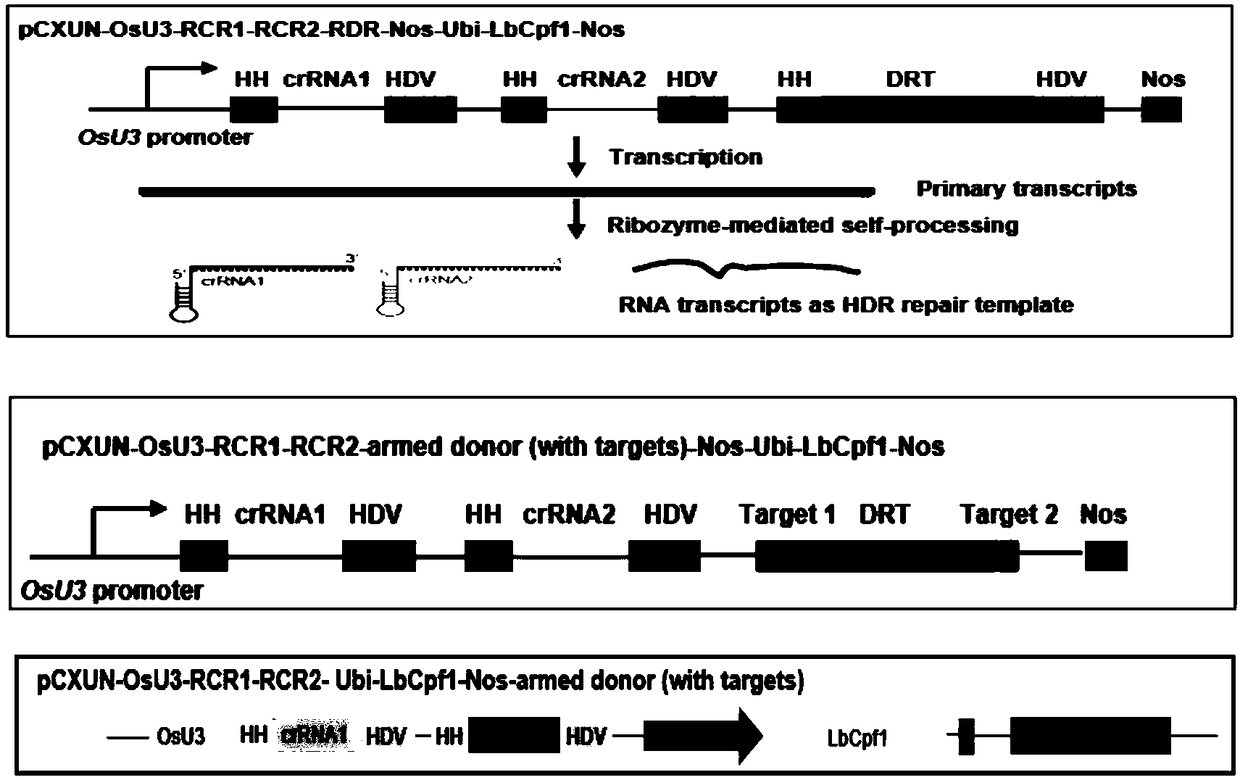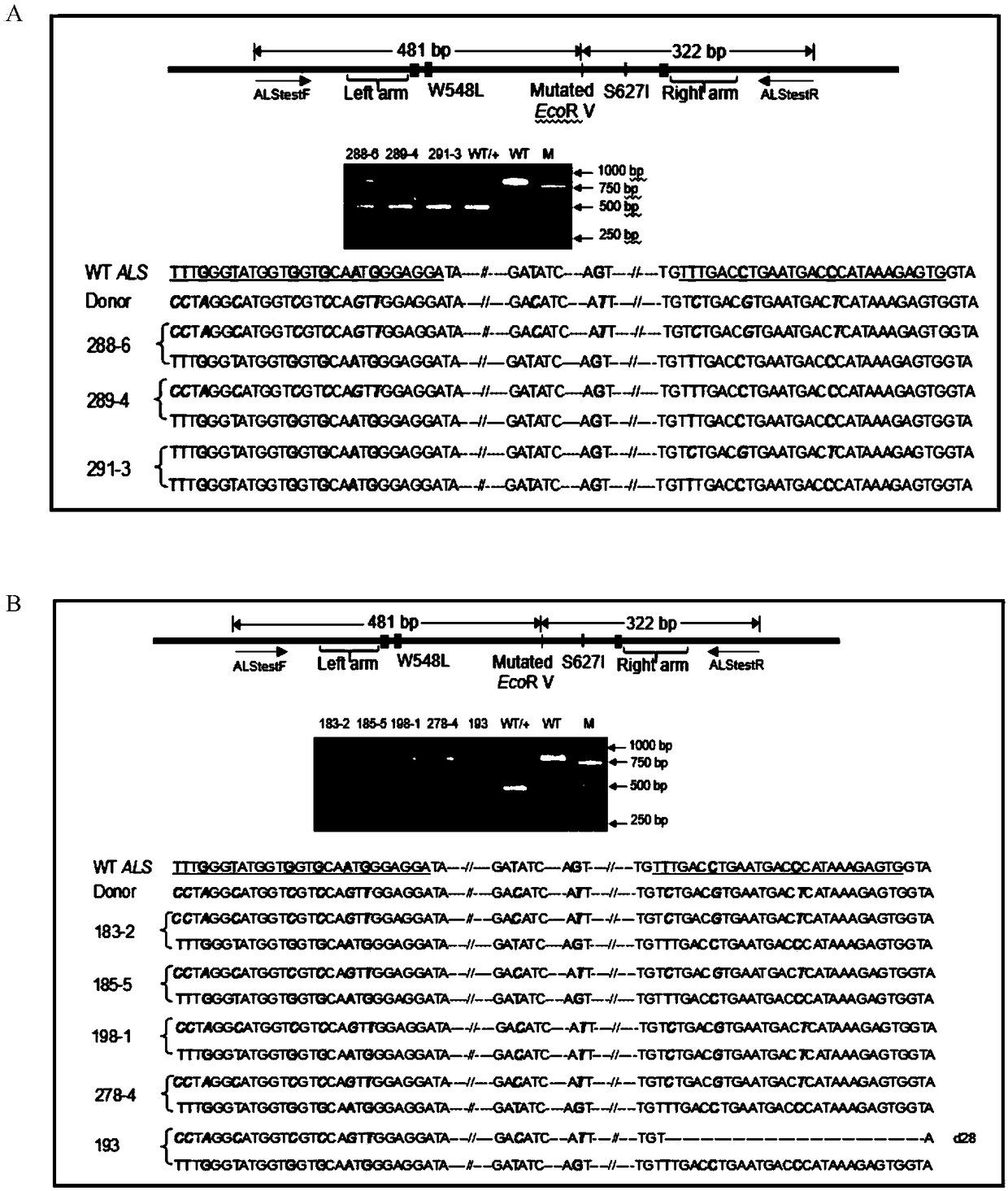CRISPR/Cpf1 system-mediated homologous recombination method using RNA transcript as repair template
A template and homology arm technology, applied in the field of homologous recombination, can solve problems such as low probability of occurrence, unsatisfactory effect, and inapplicable transformation methods
- Summary
- Abstract
- Description
- Claims
- Application Information
AI Technical Summary
Problems solved by technology
Method used
Image
Examples
Embodiment 1
[0064] Example 1. Using the CRISPR / Cpf1 system to realize the precise modification of the ALS gene mediated by RNA transcripts as repair templates
[0065] 1. Construction of expression vector
[0066] 1. Construction of plasmid pCXUN-LbCpf1-Nos
[0067] (1) The plasmid pCXUN-Cas9 was double digested with restriction endonucleases BamHI and HindIII to obtain a vector backbone 1 of about 9282bp.
[0068] (2) The LbCpf1-OsU6 vector was double-digested with restriction endonucleases BamHI and HindIII to obtain a Ubi-LbCpf1 expression cassette of about 5846 bp.
[0069] (3) Ligate the vector backbone 1 and the Ubi-LbCpf1 expression cassette with T4 ligase to obtain the plasmid pCXUN-LbCpf1-Nos.
[0070] 2. Construction of OsU3-RCR1-RCR2 expression cassette
[0071] (1) Using the plasmid pRS316-RCR-GFP as a template, the primer pair consisting of primer RCR1F2 and primer RCR-common-R was used for the first round of PCR amplification to obtain the first round of PCR amplification...
PUM
 Login to View More
Login to View More Abstract
Description
Claims
Application Information
 Login to View More
Login to View More - R&D
- Intellectual Property
- Life Sciences
- Materials
- Tech Scout
- Unparalleled Data Quality
- Higher Quality Content
- 60% Fewer Hallucinations
Browse by: Latest US Patents, China's latest patents, Technical Efficacy Thesaurus, Application Domain, Technology Topic, Popular Technical Reports.
© 2025 PatSnap. All rights reserved.Legal|Privacy policy|Modern Slavery Act Transparency Statement|Sitemap|About US| Contact US: help@patsnap.com



